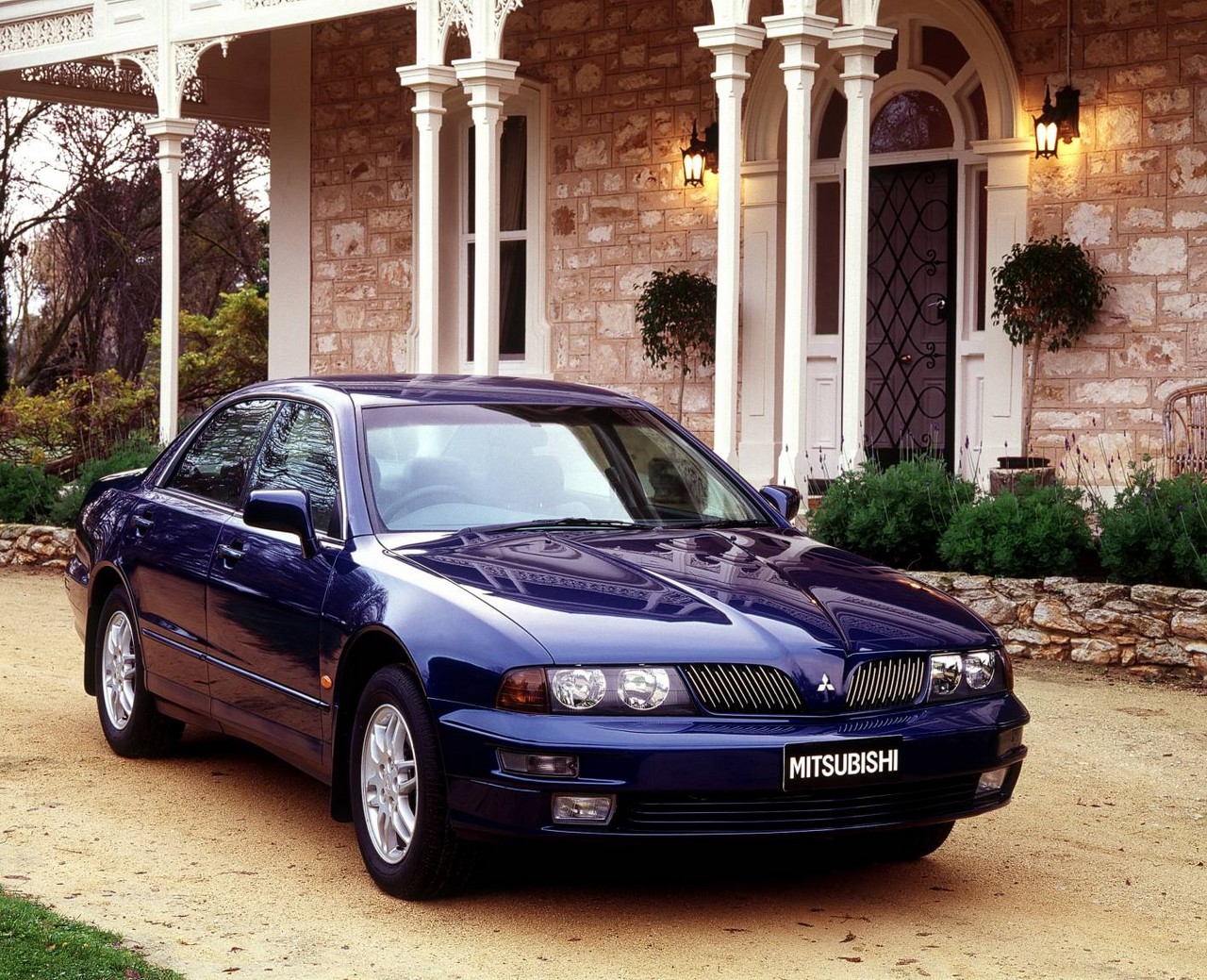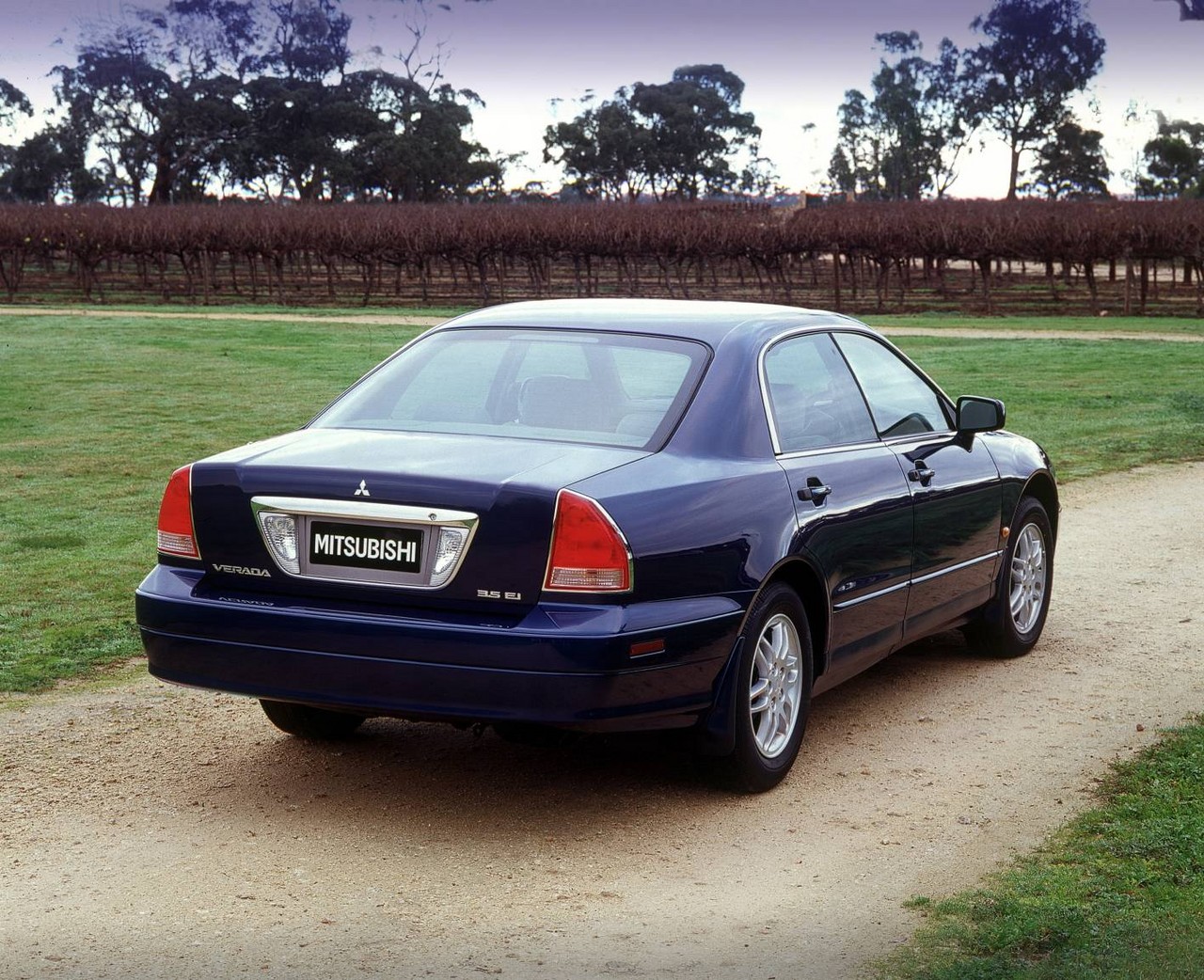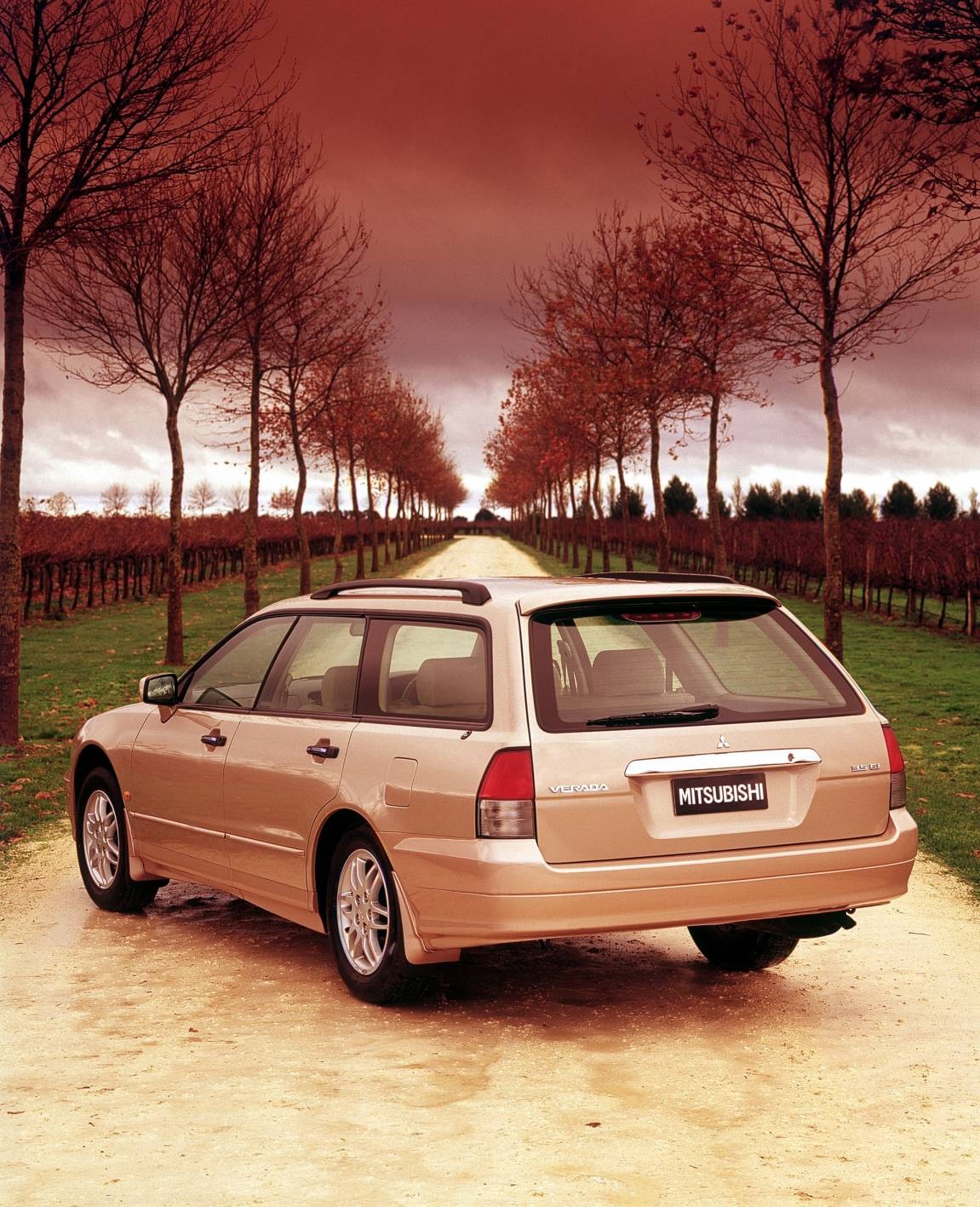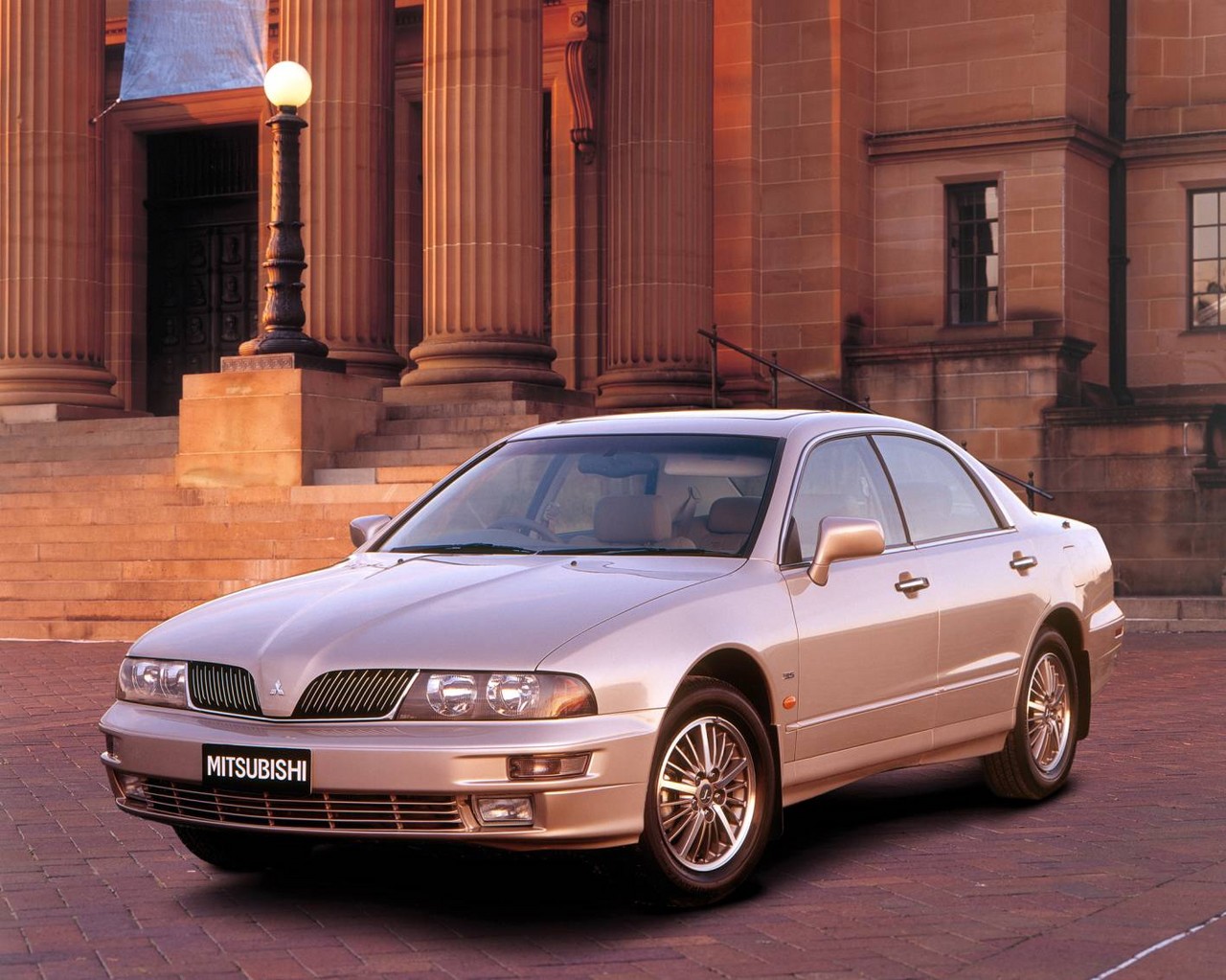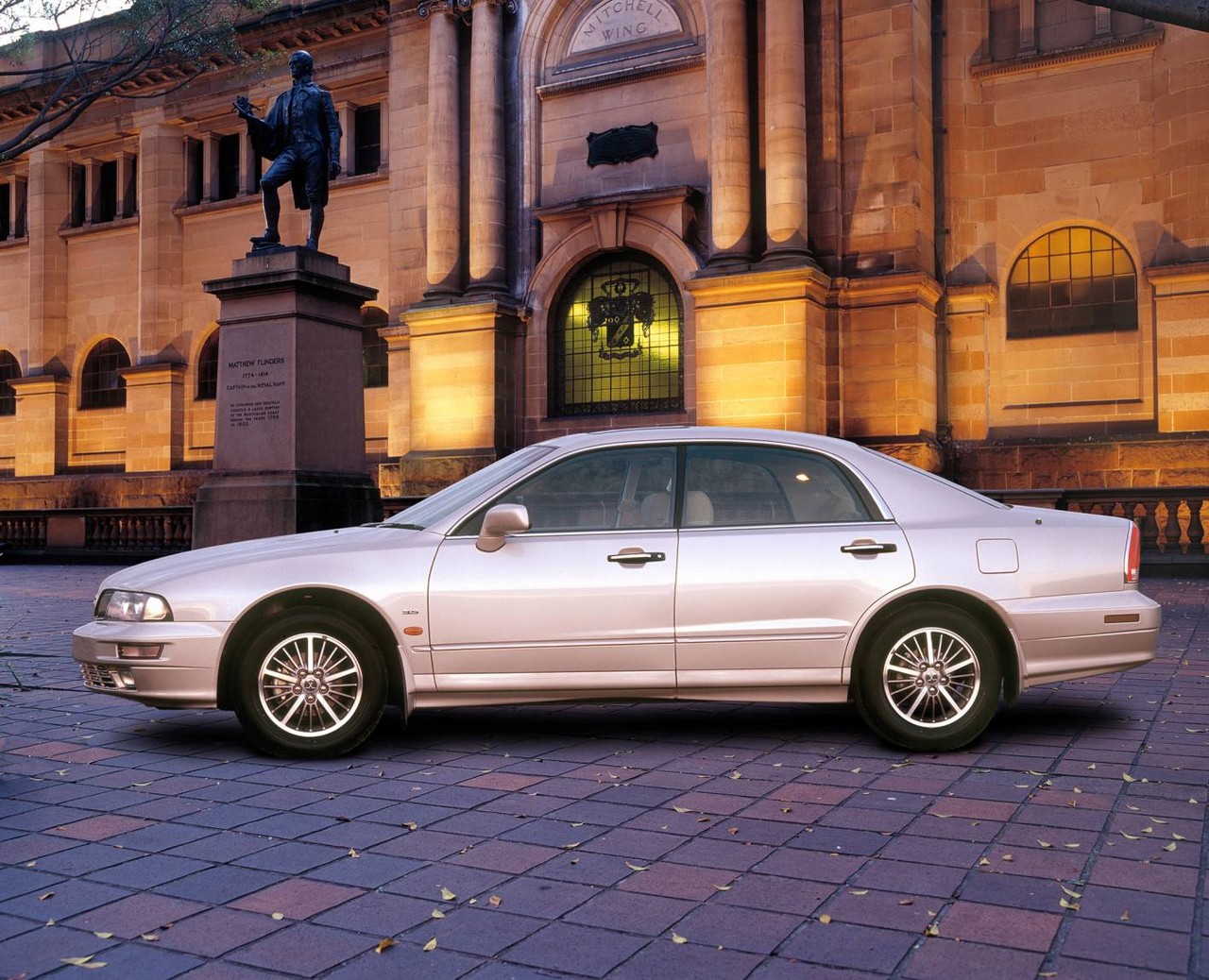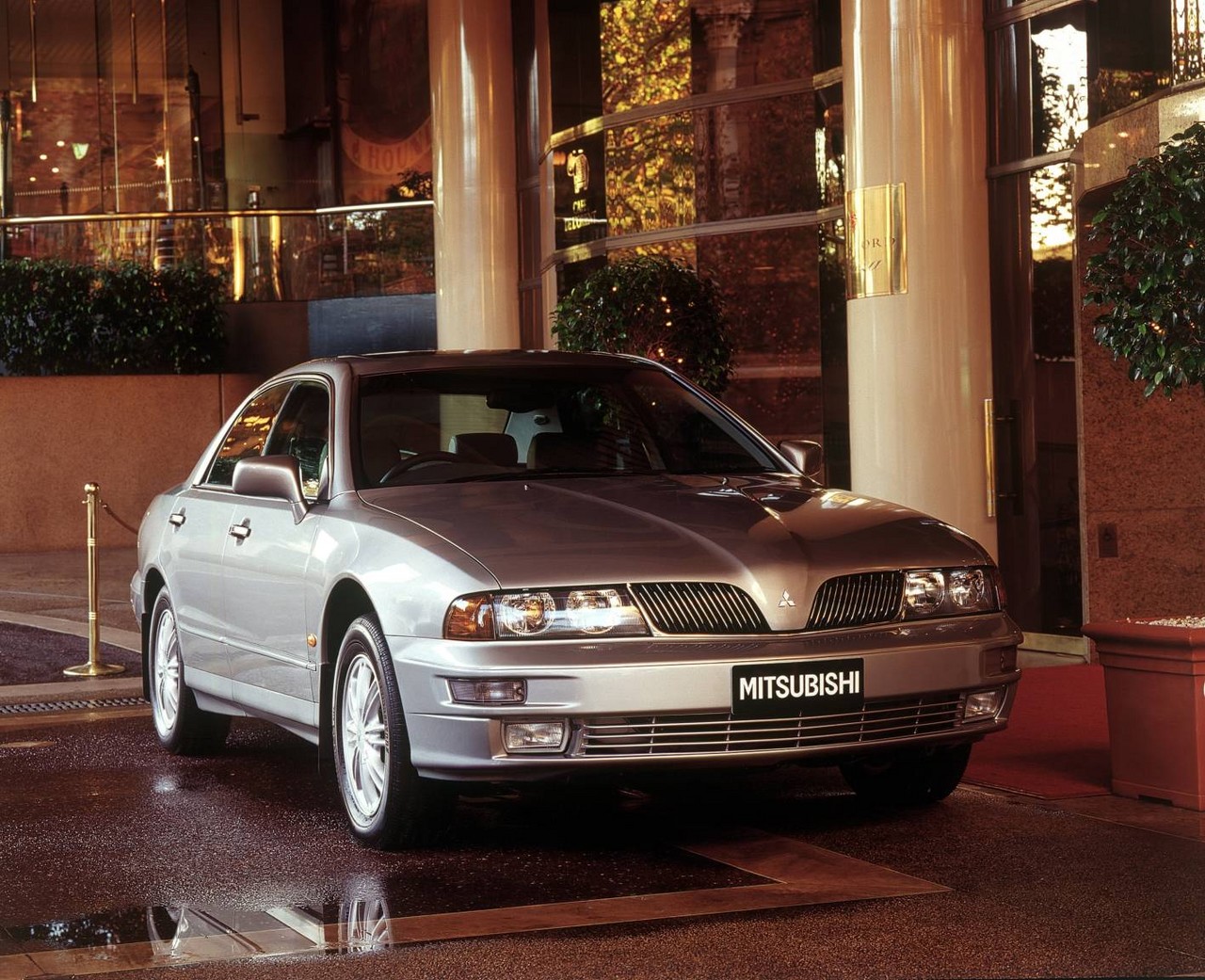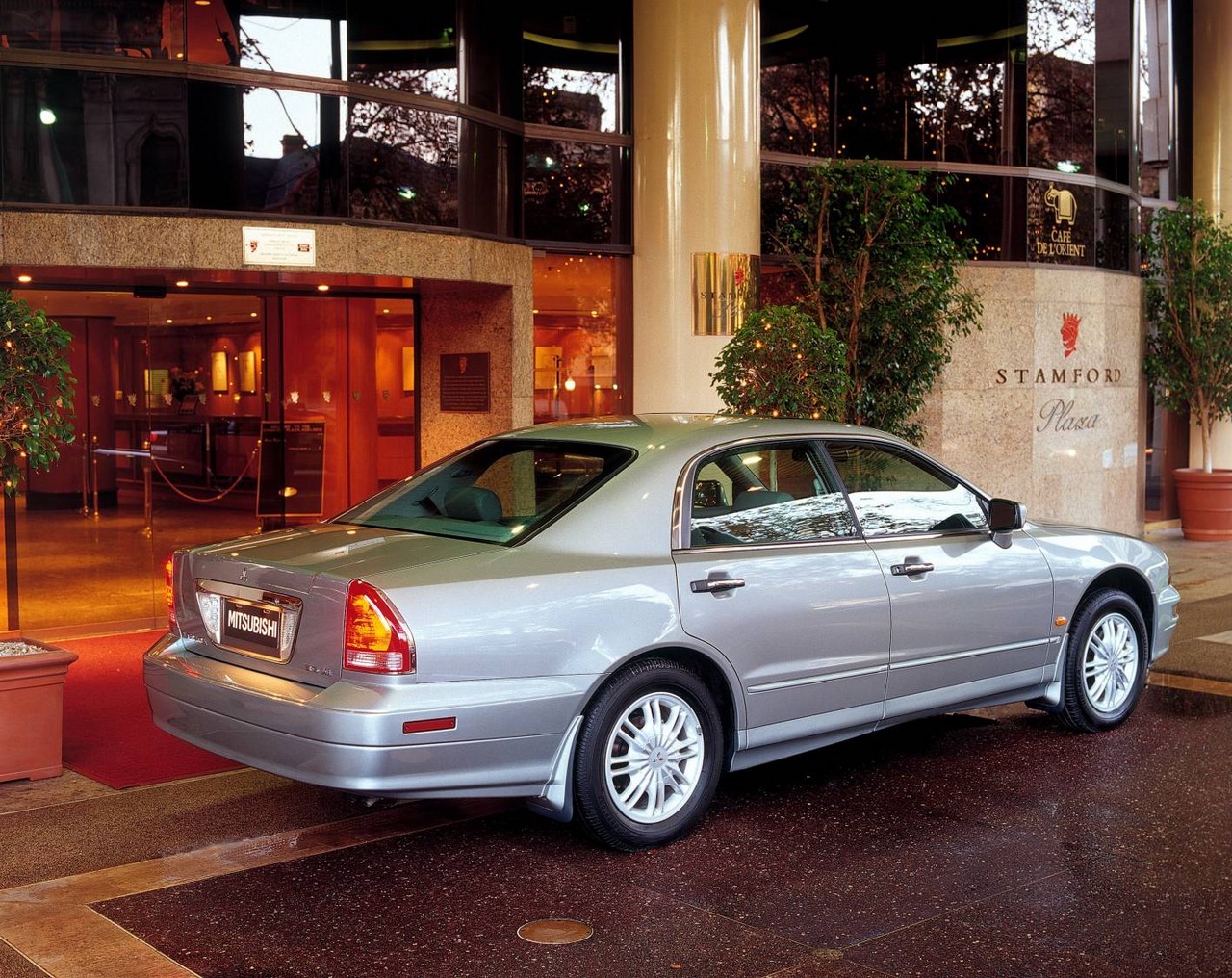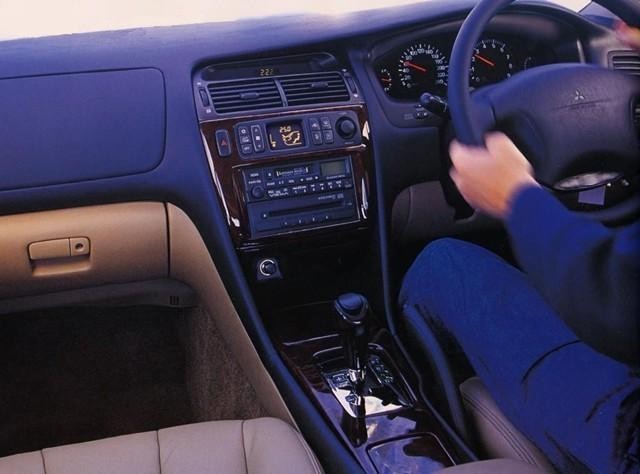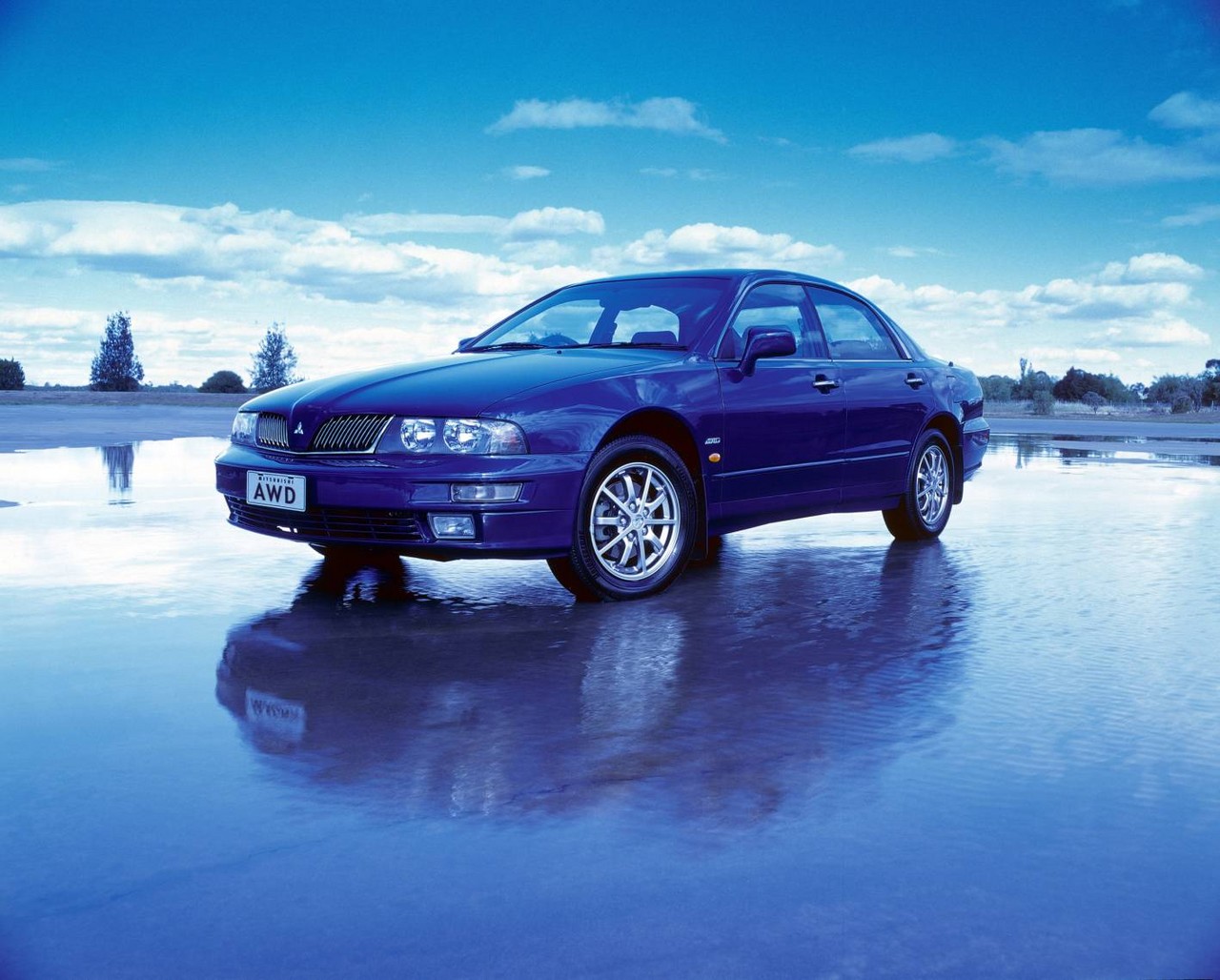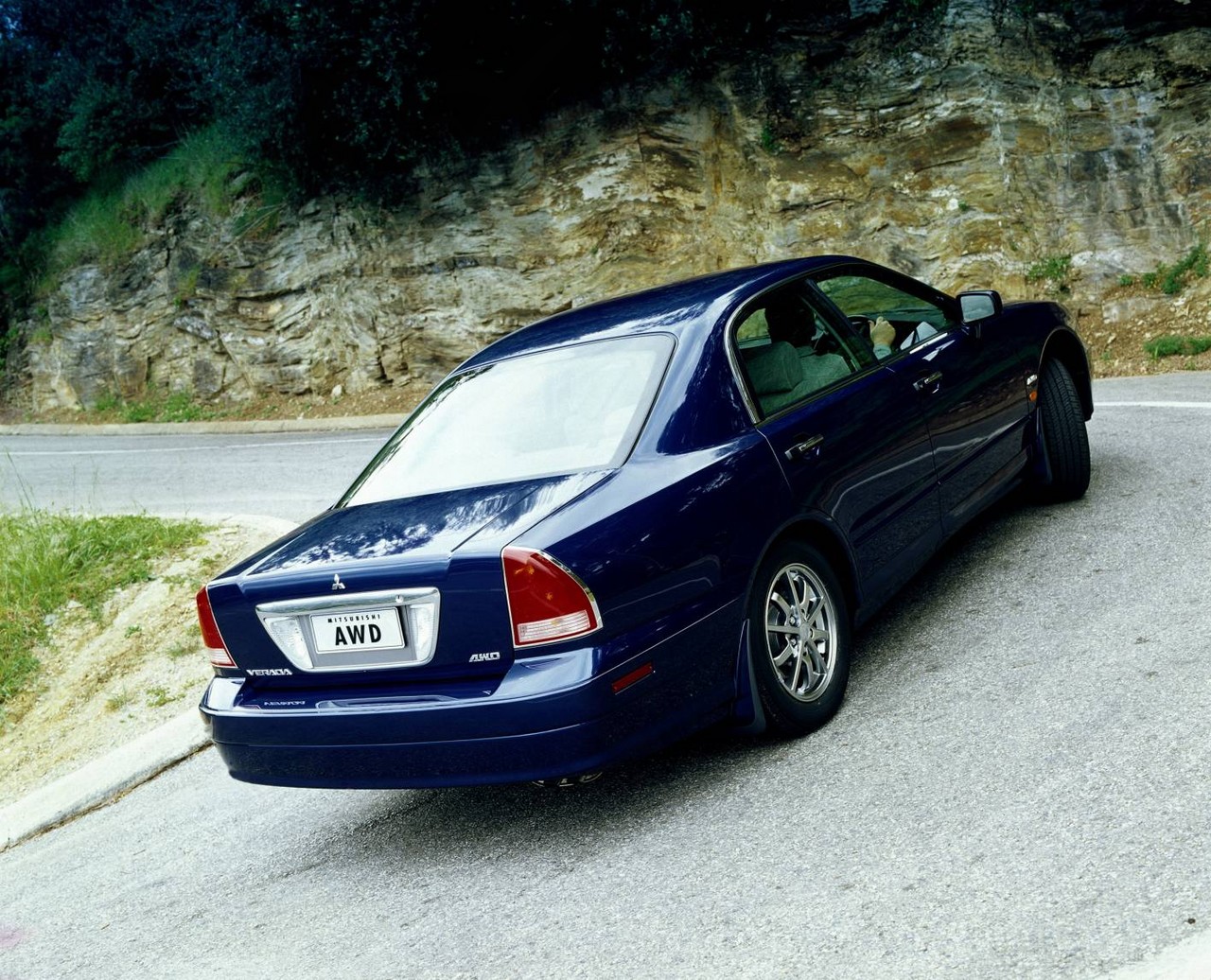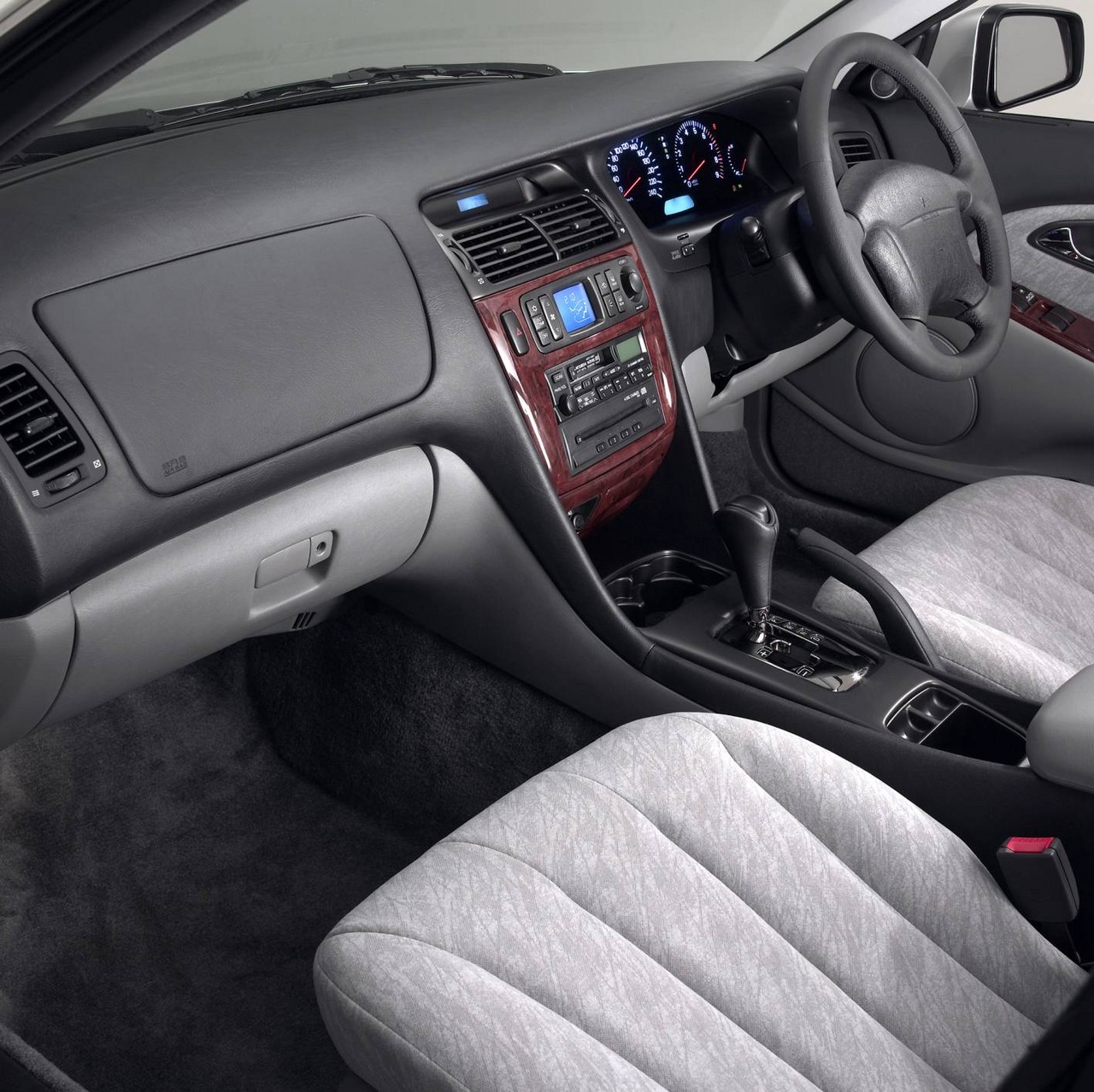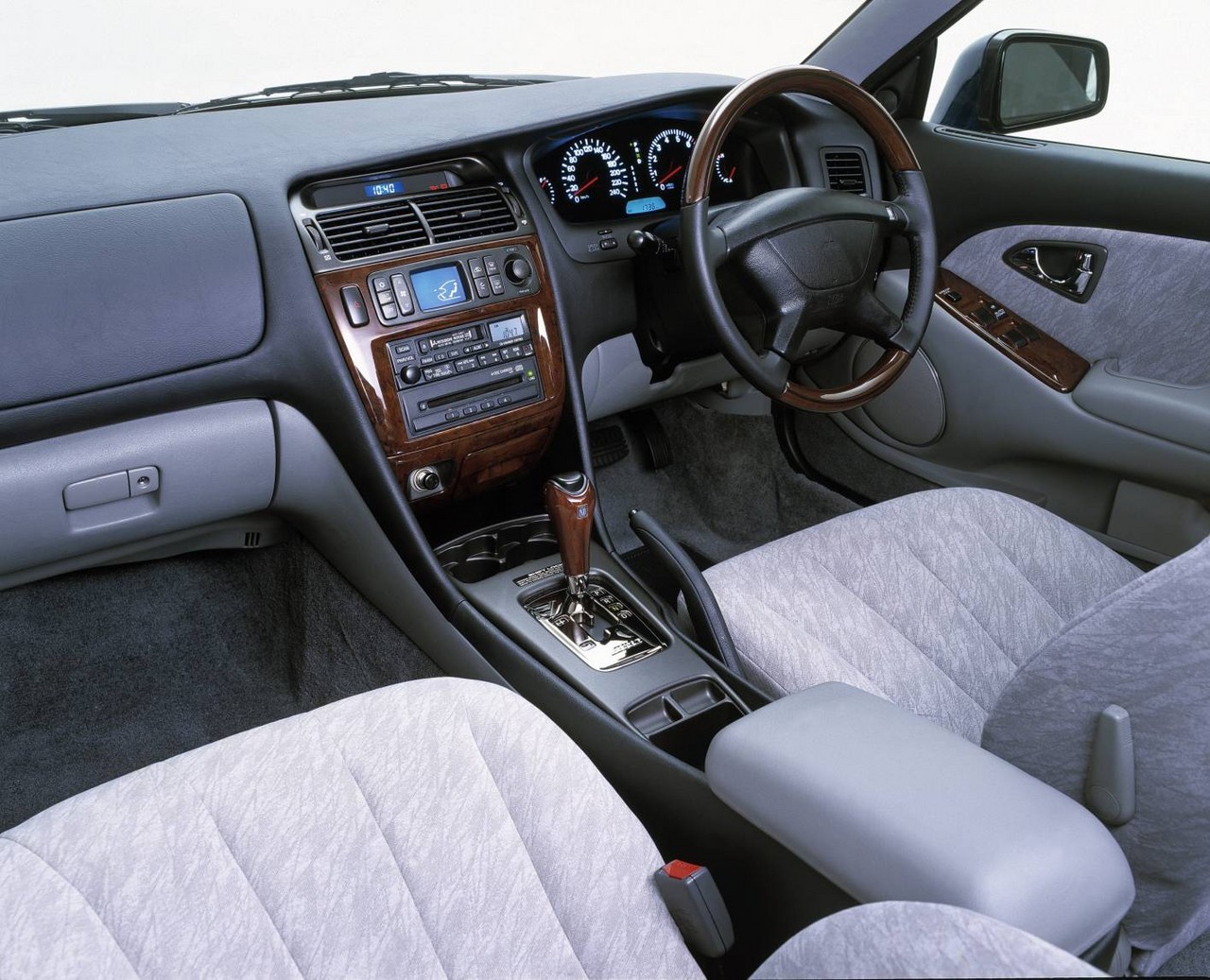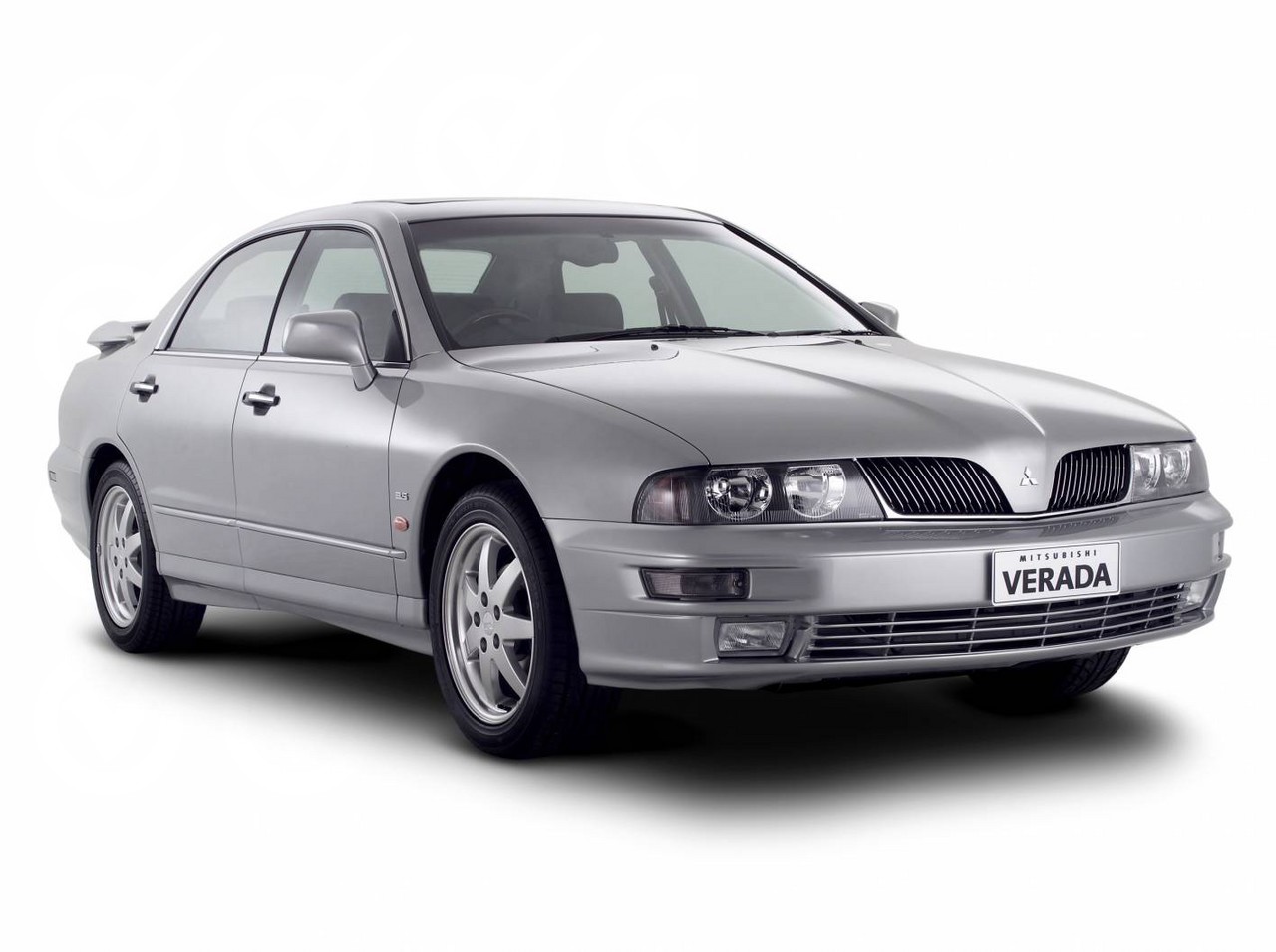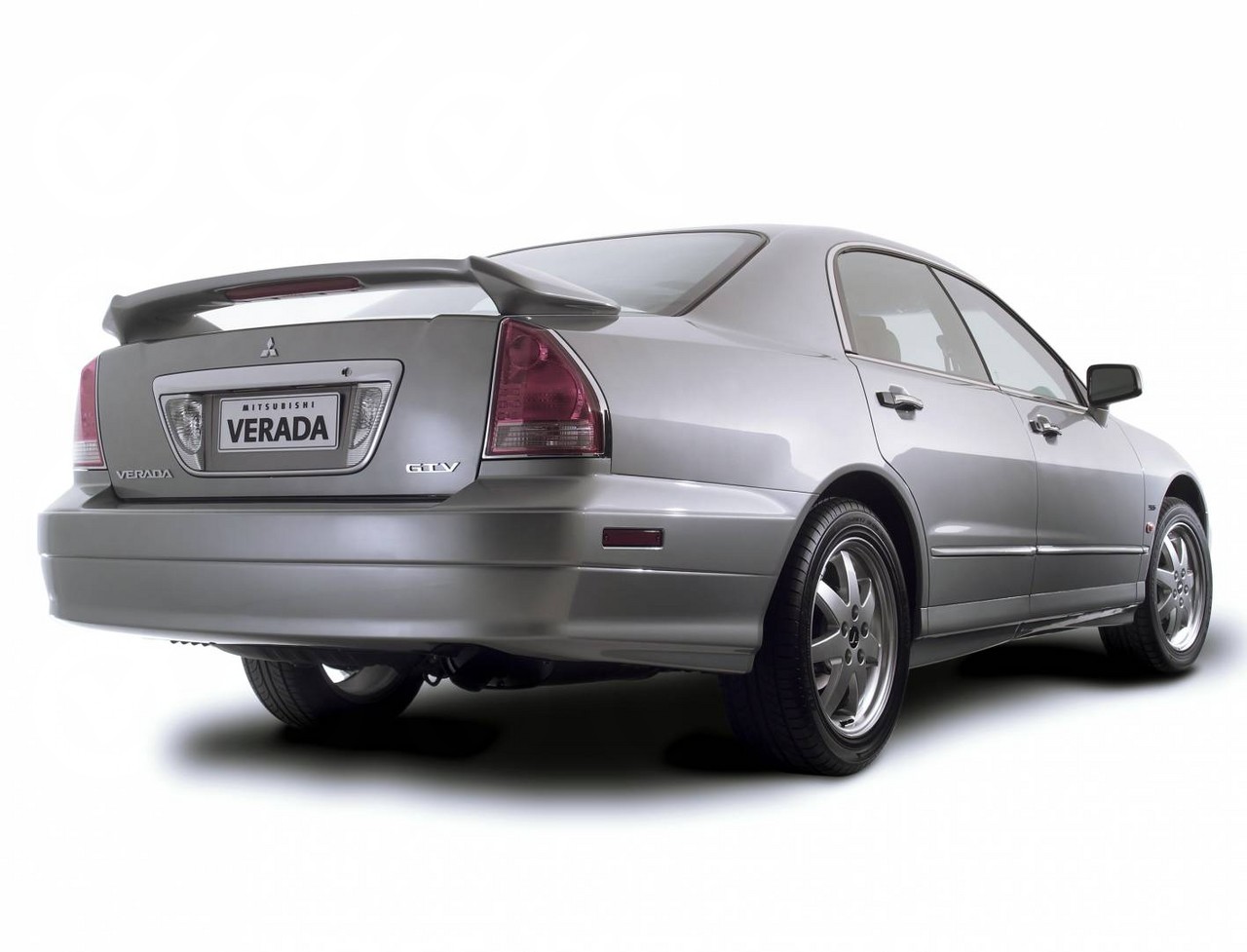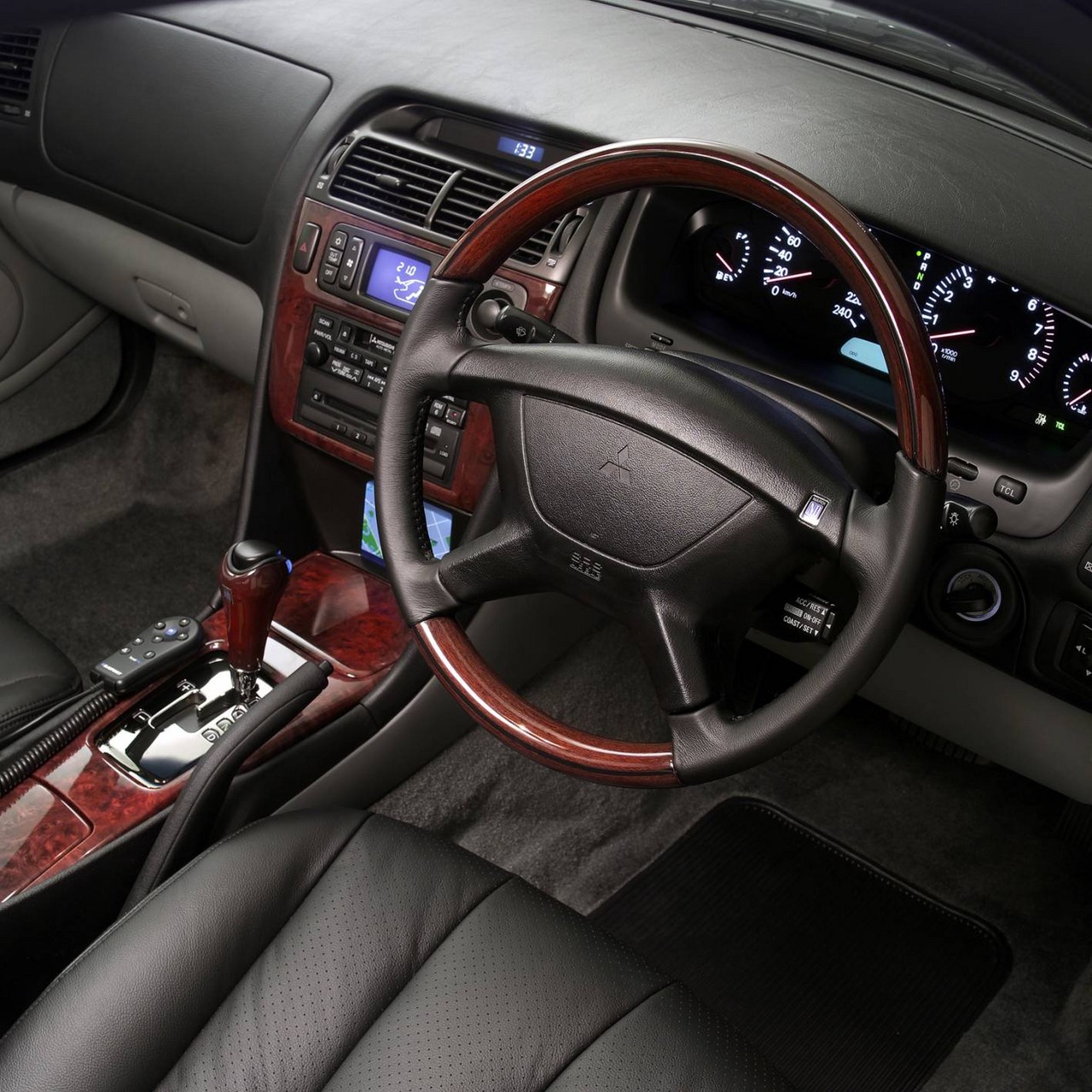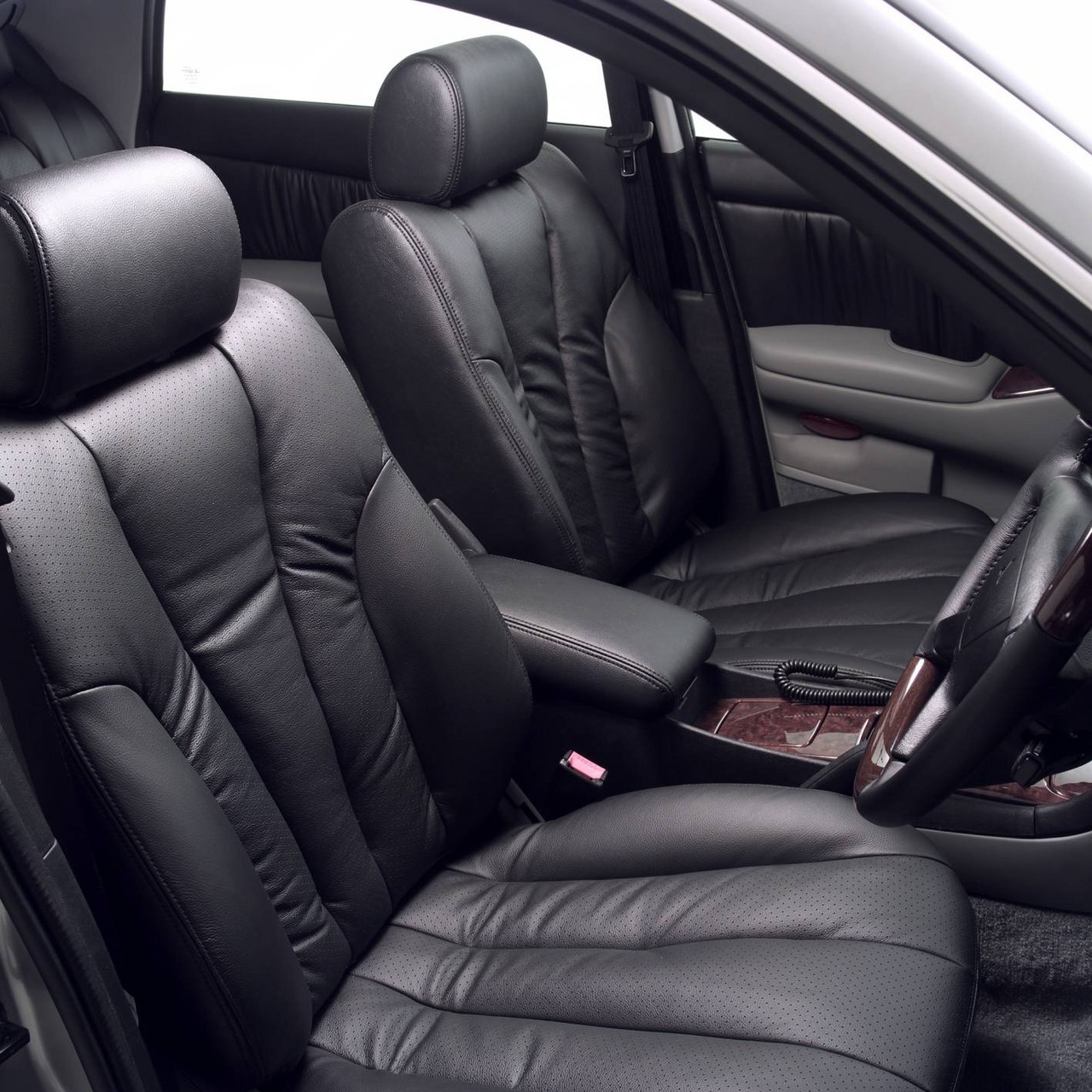
- Responsive and refined 3.5-litre V6 engine
- Intuitive five-speed automatic transmission
- Impressive ride/handling balance
- AWD Magna has engaging dynamics
- Quiet, well-insulated cabin
- Well-weighted, accurate steering
- Limited rear seat space
- Steering wheel lacks reach adjustment
- For AWD Magnas, driveline vibration during acceleration
- Large turning circle
- Loud exhaust note for Verada GTV and GTVi
Review: Mitsubishi KJ.I Verada (2000-02)
Overview
Released in August 2000, the Mitsubishi KJ Series I (KJ.I) Verada was available as a sedan or wagon. Manufactured at Clovelly Park, South Australia, the front-wheel drive Verada was powered by a 3.5-litre V6 petrol engine.
6G74 engine and transmission
The 3.5-litre 6G74 V6 petrol engine had a cast iron block, alloy cylinder head, single overhead camshaft, four valves per cylinder and a compression ratio of 9.0:1. In September 2001, power the 6G74 engine increased to 155 kW due to the introduction of a Karma Vortex airflow meter and a higher compression ratio.
The four-speed automatic transmission had ‘Smart Logic’ programming that enabled it to adapt to driving conditions and style.
Dimensions and KH comparison
Based on the TJ Magna , the KJ Verada sedan was 4939 mm long, 1785 mm wide, 1435 mm tall and had a 2722 mm long wheelbase. Relative to the sedan, wagon bodies were 61 mm shorter (at 4811 mm) and 47 mm taller (1482 mm).
Compared to its KH Verada predecessor, the KJ Verada could be identified by its extended bonnet which formed a body-coloured ‘nose’ section for the grille; at the rear, the decklid was redesigned into a one-piece unit and there were new combination lamps.
Suspension
The KJ Verada sedan had MacPherson strut front suspension with lower A-arms and an anti-roll bar and independent, multi-link rear suspension with upper and lower control arms. The Verada wagon, however, had a tubular rear axle with four trailing arms and a lateral locating rod.
| Variants | Engine | Trans. | Years | Peak power | Peak torque |
|---|---|---|---|---|---|
| Ei, Xi |
3.5-litre V6 | 4sp auto | 2000-01 | 150 kW at 5000 rpm | 300 Nm at 4000 rpm |
| 2001-02 | 155 kW at 5250 rpm | 316 Nm at 4000 rpm |
Safety equipment
Standard safety equipment for the KJ Verada included dual front airbags, ABS, electronic brake force distribution, traction control and Mitsubishi’s ‘Traction Control Logic’. While traction control (Mitsubishi’s ‘Slip Control’) reduced engine power to reduce front wheelspin under acceleration, Trace Control would reduce power if the inputs indicated that the driver was driving too quickly or aggressively through a corner. However, the Trace Control system relied on inputs from steering wheel angle, throttle position and wheel speed rather than lateral or longitudinal sensors.
ANCAP crash testing
In ANCAP crash testing , a TJ.I Magna Executive – equipped with a single driver’s airbag – received a three star adult occupant protection rating with a score of 17.5. In the offset crash test, the passenger compartment was substantially deformed; there was a risk of serious chest injury for both front occupants and protection from lower leg injury was poor for the driver. In the side impact test, there was a high risk of life-threatening chest injury for the driver.
Features: Verada Ei and Xi
Standard features for the Verada Ei included 16-inch alloy wheels, an eight speaker sound system with four-disc in-dash CD player, climate control air conditioning, cruise control, front fog lights, remote central locking, power mirrors and windows, a tilt adjustable steering wheel, power antenna, trip computer, an alarm and immobiliser.
The Verada Xi was further equipped with leather seats, a power adjustable driver’s seat, power sunroof and a leather-wrapped steering wheel and gearshift.
September 2001: Verada update
IIn September 2001, the KJ Verada underwent a minor update as the Ei was fitted with a new chrome grille, while both the Ei and Xi were fitted with new alloy wheel designs and illuminated vanity mirrors. As noted above, power for the 3.5-litre V6 engine increased to 155 kW due to a higher compression ratio and the introduction of a Karman Vortex airflow meter.
Review: Mitsubishi KJ.II Verada (2002-03)
Overview
Released in July 2002, the KJ Series II (KJ.II) Verada was fitted with the five-speed ‘Sports Mode’ automatic transmission (with sequential shift function) as standard. Inside, there were new instrument cluster features, two-tone black/slate or black/sandstone colour schemes and chrome gearshift surrounds.
The KJ.II Verada range was expanded with the introduction of the sports/luxury GTV variant. In December 2002, the range was further expanded by the AWD variant – fitted with Mitsubishi’s ‘QuadTec AWD’ system – and, in March 2003, by the limited-run GTVi variant.
| Body | Variant | Engine | Peak power | Peak torque |
|---|---|---|---|---|
| Sedan, wagon |
Ei | 3.5-litre petrol V6 | 155 kW at 5250 rpm | 316 Nm at 4000 rpm |
| Sedan | AWD | 3.5-litre petrol V6 | 154 kW at 5000 rpm | 310 Nm at 4000 rpm |
| GTV, GTVi |
3.5-litre petrol V6 | 163 kW at 5250 rpm | 317 Nm at 4500 rpm | |
| Xi | 3.5-litre petrol V6 | 155 kW at 5250 rpm | 316 Nm at 4000 rpm |
Safety equipment
Compared to its TJ.I predecessor, safety equipment for the TJ.II Verada was unchanged. The Verada AWD, however, was further equipped with electronic brake force distribution and more powerful brakes with 294 mm ventilated front discs with two-piston calipers and 284 mm ventilated rear discs.
Features: Verada Ei, Xi and GTV
Compared to its TJ.I predecessor, the Verada Ei variant gained a power adjustable driver’s seat, while the Xi was fitted with a power adjustable front passenger seat and Nardi wood gearshift knob.
Compared to the Ei variant, the newly introduced Verada GTV was fitted with 17-inch alloy wheels with 225/50 R17 Bridgestone Grid II tyres and sports suspension (including a rear anti-sway bar), satellite navigation, black leather seats with perforated inserts, black leather door inserts and console lid, and a Nardi wood steering wheel and gear knob. Visually, the GTV was distinguished by its black brake calipers and rear decklid spoiler with high-mounted stop lamp.
AWD Verada
Derived from the Japanese AWD Diamante and Lancer Evolution VI, the full-time four-wheel drive system featured an open front differential, a viscous coupling centre differential and a mechanical plate-type limited slip rear differential. The system provided a default 50:50 front:rear torque split, but could transfer torque between the front and rear axles and between the rear wheels in the event that traction was lost. The suspension was upgraded with a rear stabiliser bar.
The Verada AWD was similarly equipped to the Ei, but distinguished by its shadow chromed alloy wheels and chrome gearshift surround.
2003 Verada GTVi
In March 2003, a limited-run GTVi variant was released. Compared to the Ei, the GTVi featured 17-inch alloy wheels with sports suspension, eight speaker sound system with four-disc in-dash CD player, satellite navigation, woodgrain and leather steering wheel and woodgrain interior trim.
Related links
